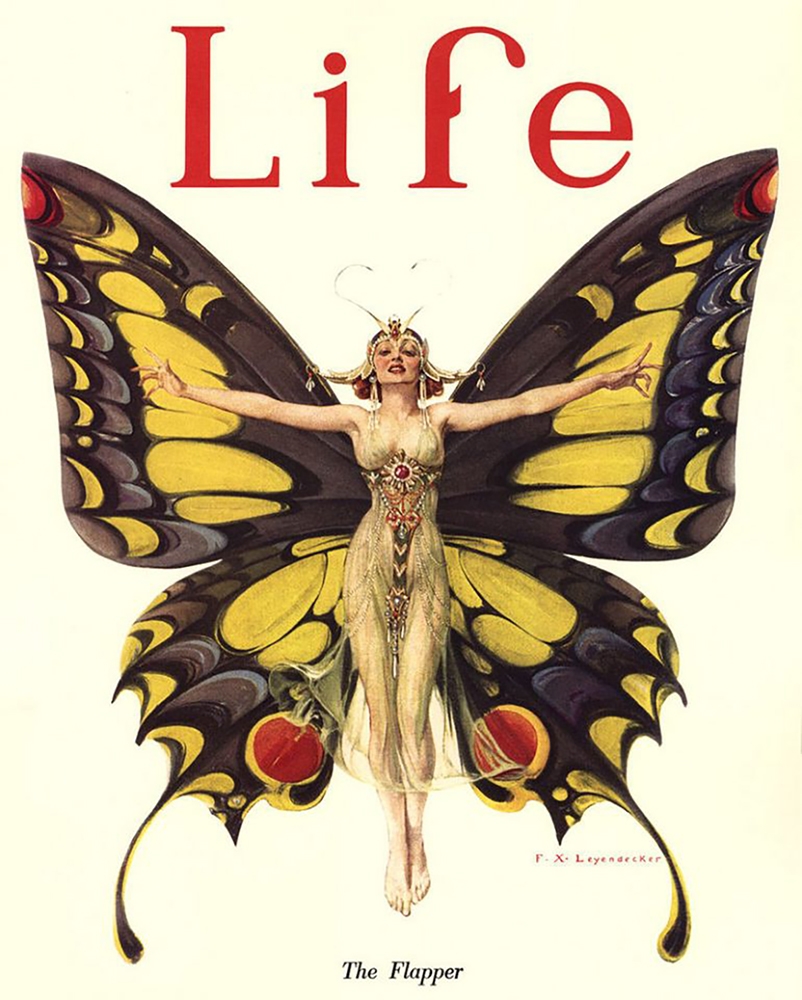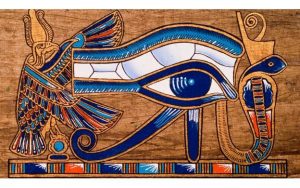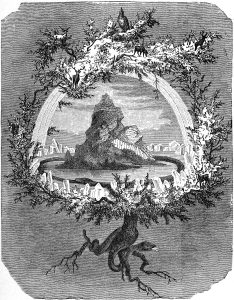Winner of the Fall 2016 StMU History Media Award for
Best Article in the Category of “Culture”
When one thinks of the 1920’s era one immediately thinks about Flappers. A flapper was considered a young woman who was very fashionable. This was a young female who enjoyed life to the fullest, flouting her unconventional standards of behavior and carefree party lifestyle.1 The spirit behind this movement was all about leaving the traditional ways of life behind and transforming into an independent woman.

Before World War I, the concept of femininity was referred to as the Gibson Girl. This term was used to describe these new independent and often well educated women. Gibson girls wore their hair long, pinned up and adorned with beautiful hats. They completed their ensemble by wearing long skirts and blouses that buttoned up to their necks. Despite their feminine appearance, these women were more than capable of doing the same things that men did. Examples of this include activities such as playing sports: skating, golfing, bicycling, tennis. These young ladies did not go out until they were asked properly by a young man who had good intentions and a promise of marrying them. Gibson Girls soon broke away from their traditional ways.2
In 1915, two years before America’s entry into World War I, a famous author by the name of H.L. Mencken introduced the word “Flapper” to the United States. Mencken stated that a flapper was “a woman who consumed music, literature and periodicals voraciously taking her cues for behavior and style from the media in front of her rather than the moral codes of decorum.”3 Another famous author, F. Scott Fitzgerald, famous for his classic novel The Great Gatsby, described the flapper as “lovely, expensive, and about nineteen.” John Held Jr., who was an American cartoonist, emphasized the flapper by drawing young girls wearing unbuckled galoshes that would make a “flapping” noise when walking.4 Despite the many different terms, Flappers were described essentially the same way: they were young girls who enjoyed the party life and had a sense of fashion.
After World War I ended in 1918, many things had changed for the men returning home, particularly the roles and values that women were embracing. The traditional values were gone and in their place came a faster, sleeker, and more daring approach to life. This time period not only ushered in an era of change in values, but it also established a new baseline for what was considered feminine. The Flapper Age was born and it brought with it a new and independent woman. These women smoked, drank, voted, cut their hair into bobs, wore eyeliner, and went to as many parties as they could—enjoying every bit of the social life along the way.5

During the 1920’s, fashion changed drastically due to a very famous designer, Coco Chanel. This woman helped flapper fashion to stand on its own. Typical flapper clothing included a simple sack like dress, which allowed women of all classes to make their own dresses and remain on trend.6 The waist of the dress was dropped to the hipline, and the skirt fell just below the knee. Stockings made of rayon were added and worn over a garter belt. To complete the look, bracelets were added and necklaces ran from the neck to the waist. Cloche hats sat atop their heads and drew the eye into a new hairstyle trend known as the bob.7 The make-up of flappers consisted of a red powder or cream that was used for the lips and cheek, eye-liner, powder for the face, and red lipstick that became very popular.
On January 19, 1919, the Eighteenth Amendment, also known as the Volstead Act, came into effect and gave way to the Prohibition Era in which the sale, production, importation, and transportation of alcohol was banned across the nation.8 This change in the legal system caused the sale and consumption of liquor and alcohol to go underground. The most rebellious thing a flapper could do at this time was to consume alcohol, and these young girls had a reputation for being giddy. The following year, on August 18, 1920, the Nineteenth Amendment was passed and women now had the right to vote.9 In 1924, the first radio launched more than 600 commercial channels around the U.S. The radio at the time was the social media on the flapper life. Many young girls swarmed the theaters to see the image of the flapper on screen. Famous actress Clara Bow, starred in the “Flapper” and made the look iconic.
On December 2, 1927, Henry Ford invented the Model A vehicle and car sales increased.10 Women were now owners of vehicles, and the car became a lifeline to a world full of excitement for the flapper in particular. With no one to stop them, they were free to come and go as they pleased. Liberated women were now able to go out and enjoy dancing during this era that was the Jazz Age. The most popular thing for a flapper to do was to go to a nightclub where she would drink, dance, and show off her moves. The era of the Flapper, however, came to an end with the Wall Street Crash of 1929. Many young women lost their jobs and the incomes that had given them such independence.11
Life in the 1920’s left a huge legacy for women to this day. Flappers and the forward-thinking concept of the modern woman is what initiated the change in society for how women were viewed then as well as how they continue to be viewed in present day. With their bold choice in attire, along with their new views and attitudes regarding femininity, both in fashion as well as social conduct, Flappers left behind the old traditional ways and paved the road for a more liberated female.
- Salem Press Biographical Encyclopedia, January 2016, s.v. “Flappers,” by R.L. Smith. ↵
- Kelly B. Sagert, Flappers: A Guide to an American Subculture (Greenwood Publishing Group, 2010), 1-2. ↵
- Brian DiPaolo, Flappers: Issues & Controversies in American History (Infobase Publishing, 2007), 4-5. ↵
- DiPaolo, Flappers: Issues & Controversies in American History, 4-5. ↵
- Soo Hyun Park, Flapper Fashion In the Context of Cultural Changes of America in the 1920’s (CUNY Academic Works, 2014), 1-2. ↵
- Salem Press Biographical Encyclopedia, January, 2016, s.v. “Flappers,” by R.L. Smith. ↵
- Sagert, Flappers: A Guide to an American Subculture, 3. ↵
- Sagert, Flappers: A Guide to an American Subculture, 5. ↵
- DiPaolo, Flappers: Issues & Controversies in American History, 2. ↵
- F.L. Allen, Only Yesterday: An Informal History of the Nineteen Twenties (National Humanities Center, 1931), 5. ↵
- Alan Brinkley, American History: Connecting with the Past Volume 2, 15 edition (New York: McGraw-Hill Education, 2014), 643. ↵




213 comments
Valeria Perez
The only thing I knew about flappers before reading this article was the way they dressed, but in reality they played a big part in a female revolution! It must have been both frightening and exciting to be part of the first generation of women to have this much independence.
It is inspiring to see how because of their courage women now are able to live the way we do today.
Clarissa Gonzalez
I had always remembered the period of the Roaring 20’s as a time where everyone celebrated. This decade was right after an economic depression and was just the first time a lot of people were happy in a long while. I hadn’t known much about what a flapper was, but I had a very clear picture of how ones do look. Going in deeper to what culture this lifestyle held, gave me an entirely new outlook on who these women really were.
Cynthia Rodriguez
“The Great Gatsby” by F. Scott Fitzgerald is what introduced me to the roaring twenties and flappers. Once I finished the novel I saw the movie, and I was fascinated by the way the flappers’ dressed. Their fashion is so iconic. I am glad, however, that this article focused on more than just their style. This article addressed their independence and attitude. They strayed from the traditional life of a woman to a more liberating one. I really liked this article. I thought that sentences flowed very nicely which made it enjoyable to read. There was a nice use of images and it was informative.
Yadira Chavez
Such a fun read! The roaring twenties is especially similar to present day 2018. I think there are many likenesses to the feminist movement in progress right now, and perhaps we are living in a future historically important era. These women flappers, given freedoms never before had, lived wonderfully eclectic lives and it makes me sad that they are often painted negatively.
Jonathan Arreola
The Roaring 20’s seem like one of the most exciting decades in US history. My connotation of the era is just a huge, fun, revolutionary party. The flapper is iconic and it changed the lifestyle and responsibilities of women. Women became more independent and, surprising to me, with the help of Coco Chanel they developed their own new fashion. Women were not afraid of men at that point in time, everyone was living for enjoyment, it was beautiful and life changing even until present day.
Ysenia Rodriguez
Flappers gave way to the independent movement of women as they came out and showed their personal interests doing things not yet seen before from a woman. From partying to drinking to voting, these Flappers defied the social norms of the times and bursted through traditional roles designated to them as the “Roaring 20s” waged on. It is quite extraordinary that these women were able to express their newly found confidence with beauty and stride.
Kacey Diaz
The first time I heard on a “Flapper” was when my 11th grade English teacher made my classmates and I do a project on different topic during the 1920’s in preparation to reading “The Great Gatsby” by F. Scott Fitzgerald. One of my classmates did her project on Flapper Girls and I thought it was really interesting how the girls behaved and how there were so independent and fashionable.
Richard Morales
I once watched a television documentary over the 1930s. In the documentary, the focus was on the Great Depression. Now, reading this article it is interesting to think about how a nation could go from focusing on fashion and living luxuriously to starving and trying to live rather than focusing on entertainment. This article did a great job of describing the roaring 20s. When looking at all of the decades, this one was definitely one of success and the evolution of fashion.
Marina Castro
The Great Gatsby written by S. Fitzgerald introduced me to the concept of flappers. I find it fascinating that a woman during that time was able to rebel against society’s standards. Furthermore, I find it surprising how romanticized they were. Even in modern society, when women or men do something that is out of the norm they are heavily criticized. Great article!
Damian Jennings
It is astonishing how ladies have changed how they dress, act, and their part in a family since the 1920s. I don’t concur with ladies waiting to go out until the point when they were asked by a young fellow. They ought to be free and go any place they need and have the capacity to investigate the world. It is additionally astonishing that Chanel existed amid the season of the “flappers” and that they wore red lipstick like we see numerous ladies today. I truly delighted in perusing this article since it educated us more about these ladies that changed life and left their usual range of familiarity, defied the norms, and quit following the obligations of an ordinary house hold lady.